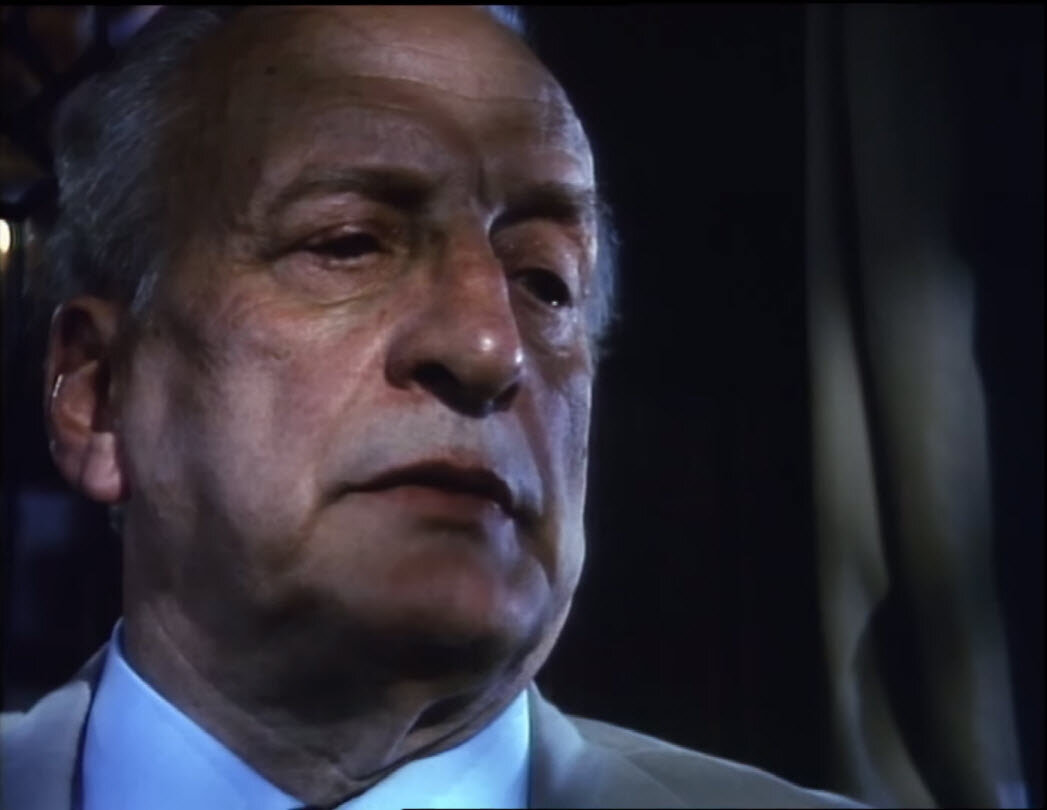The Exorcist III (1990) - Review
Much like Poltergeist, The Exorcist is considered one of the best horror movies ever made. In fact, it still has a reputation as the “scariest film ever made.” Whether you agree with that statement or not, it’s difficult to deny the first assertion. It set the groundwork for many other exorcism movies to come out over the years and was impressive for its time for a number of different reasons, including acting, direction, and special effects. It also has one of the worst big-budget sequels I have ever seen. The Exorcist II: The Heretic brought down the reputation of the brand so far that it was nearly unthinkable that a good movie in the franchise could ever be made again. Thankfully, I’m not talking about that film today. I’m talking about The Exorcist III, a film I had never seen before, but I had heard that it managed to redeem a lot of the good faith its predecessor had lost.
Image: 20th Century Fox
Pros
Acting is incredibly good from the main cast
Well-shot with some very tense scenes
Make-up and sound effects work to its benefit
Mystery aspect of the first half keeps the slow burn interesting
Chooses to associate more with the first film and ignores the second
Cons
Some supporting actors ham it up a little bit
Pretty long runtime
The actual exorcism itself just sort of happens with a character we don’t know very well
Logic of the possessing soul’s ability runs counter to any sort of resolution and requires suspending your disbelief a great deal
Plot & Thoughts
Many years after Father Karras (Jason Miller) threw himself out a window as he became possessed by the demon of the first film, in an attempt to kill himself with the demon inside his body, his close friend Lieutenant Kinderman (George C. Scott) meets up with another close friend of Karras, Father Dyer (Ed Flanders) to remember their lost comrade. The remembrance isn’t a pleasant one, however, as Kinderman is also dealing with what looks like a series of murders being performed in a manner similar to that of the Gemini killer. The Gemini killer had already been tried, convicted, and executed years ago, but the recent killings were mysteriously similar to his MO, which was never made public by the police. Before Kinderman is able to find a link to these killings, he finds himself facing yet another tragedy and a seemingly impossible circumstance involving a possessed mental patient in a hospital.
Image: 20th Century Fox
Every once in a while I need a movie like this to remind me of my tastes. I’ve said in multiple movie reviews that I enjoy slow-burn films. Then, movies like Hereditary and Annihilation throw a wrench into that theory because those were both examples of long movies with slow paces that I did not enjoy. The Exorcist III, however, is a slow-burn horror film that exceeded my expectations and I thoroughly enjoyed it.
There are plenty of reasons why I like it that have nothing to do with the pace of the movie. However, I genuinely think the pace works to its benefit, and the mystery/investigation aspect of the first half keeps the film interesting to justify its pace. It almost ends up being two separate movies because the first half is just the investigation, and the second half is all about the possessed Patient X. Yet, the two halves work together extremely well, and the speed of the film doesn’t really pick up until the climax. In fact, I think the slow pace works to its benefit and helps you empathize with Kinderman, who is clearly exhausted and in disbelief about everything that is happening.
Image: 20th Century Fox
Part of Kinderman’s portrayal of his physical and emotional fatigue can be attributed to the acting ability of George C. Scott. Scott was a phenomenal actor with a distinct voice and presence in every film in which he appeared. It’s no different here. The scenes in which he inspects the bodies of the victims, which become more personal to him as the film progresses, are examples of his acting ability. In one of these particular scenes, his acting ability is very recognizable. He slowly lifts up the cloth on the body, inspecting both hands before finally moving to the face. Each time he lifts the cloth, you can see Scott’s face contorting slightly more as the facts run through his mind and he has to deal with the reality of whose body he’s inspecting. By the time he gets to the head of the body, he’s grimacing more and pushing back the emotions as best he can in this moment.
As much praise as I can give Scott, I can’t help but say that he’s slightly upstaged by Brad Dourif, who plays the Gemini Killer and doesn’t come into the film until the first hour is over. During their interviews together, Dourif is far more intense than Scott and often steals the show. His intensity, however, is not always matched with volume. His voice is often manipulated and pitched up or down to match the moment, but Dourif’s performance remains consistently manic and disturbing throughout. Dourif has shown his ability to play these intense and psychotic roles throughout his career, notoriously as the voice of Chucky from the Child’s Play films. However, I think this is my favorite performance of his yet. He goes wild and can seamlessly transition from quiet intimidation to deafening rage through long monologues in which he’s staring into the camera. The way these scenes are shot only further improves his performance and makes Dourif a terrifying presence of madness.
Image: 20th Century Fox
The way much of this film is directed and shot outside of Dourif’s scenes also works incredibly well. This was the second of only two films that William Peter Blatty directed—who also wrote the novels on which this movie and The Exorcist are based—so it’s quite impressive. There are lots of shots that are close up on the actor’s face and focus on the expressions. There are also shots that use interesting angles to set the stage, including one infamous scene that consists of two long takes with a stationary view, which only builds the tension of the moment until the intense scare at the end of it. Even the climactic car sequence is pretty harrowing.
The only real flaw I can throw at it is that the plot requires you to suspend your disbelief a bit about how everything works and about the exorcism itself. Considering the amount of effort that the two priests go through in The Exorcist to perform the exorcism itself, and how long it takes, the actual exorcism that takes place here is conveniently brief. What’s more, it’s done by a character who is introduced early in the film but who doesn’t have much significance in the plot until the end. I had no idea who this dude was when he finally appeared to help wrap everything up—maybe he’s explained better in the director’s cut, but I’m not sure which version I saw. Not to mention, the whole premise of how the Gemini killer accomplishes his murders runs counter to how the exorcism “succeeds.” Maybe it doesn’t, and that’s the cliffhanger, but you kind of have to go along with it.
Image: 20th Century Fox
TL;DR (Conclusion)
The Exorcist III was a pleasant surprise after watching a pretty lame sequel to another horror classic. While my expectations were relatively low, it still manages to prove that you can make a decent horror movie sequel that manages to stand on its own merits and not just ride the coattails of its predecessors. It’s a different sort of movie that moves pretty slowly, but the mystery and the quality of the direction and action help keep it interesting for its lengthy runtime.














